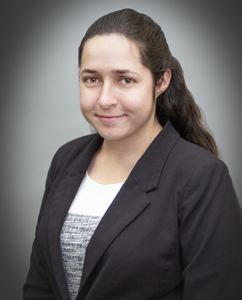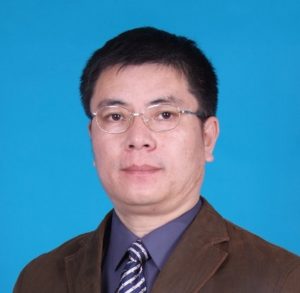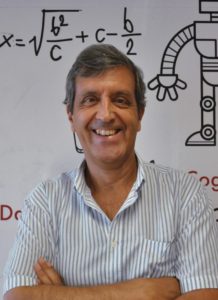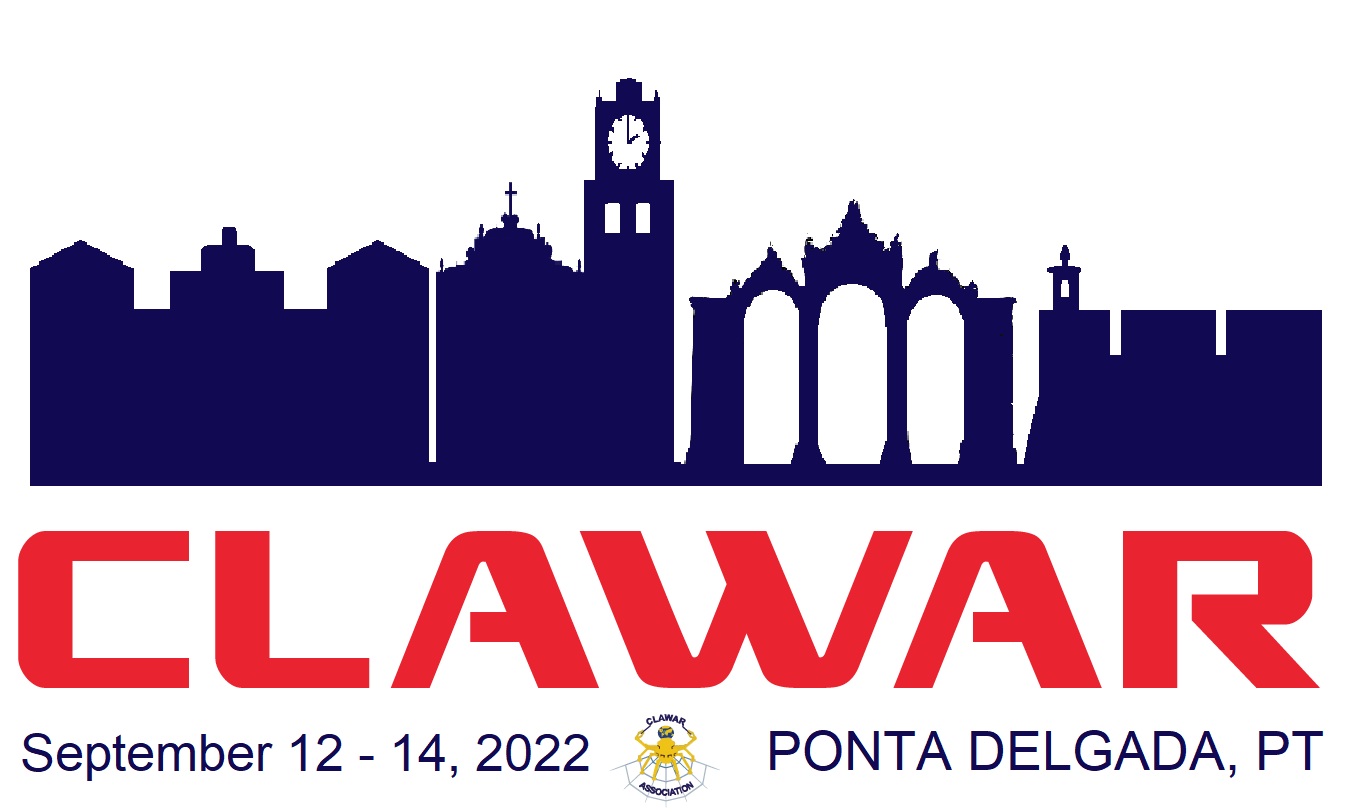Cristina P Santos
Developing Biomedical devices
More advanced and reliable robotic technologies for the healthcare industry are required since many industrialized countries are suffering from limited resources for healthcare, and an ever-increasing number of disabled and elderly population. Existing assistive technologies are unsatisfactory in meeting personal needs and fulfilling the required functions at a reasonable cost while being used in hospitals, schools, and homes in therapeutic programs that monitor, encourage, and assist their users. Any innovation to improve the capability of personalization or reduce the ratio of price and performance will promote the applications of robotic technologies in healthcare significantly, addressing more functionalities and targeted patients.
This presentation summarizes developments of assistive technologies for the disabled population to identify research targets that have guided the author research towards tangible, and measurable progress. Thus, it discusses the demands for assistive technologies for the disabled population, identifying the advantages and disadvantages of rehabilitation robots as assistive technologies and the issues involved in their development. Further, it selects a few critical challenge tasks in developing advanced rehabilitation robots to demonstrate progress. Further, presents some case studies of the author.
 Bio: Cristina P Santos (ORCID 0000-0003-0023-7203) graduated in 1994 and received her MSc degree in 1998, both Industrial Electronics Engineering, University of Minho, Portugal. Her PhD thesis was in Robotics in the field of Nonlinear dynamics, CNRS France/Uminho (2003). Her scientific activity focuses on methods to characterize human motion, the study of human locomotion and the neuro-rehabilitation of patients suffering from motor problems by means of bio-inspired robotics, artificial intelligence and neuroscience technologies. Her research seeks to advance the sciences of biomechanics, neuro-physiology and applications of ICT to design of diagnostic and therapeutic strategies to improve gait recovery processes. Presently, she is Auxiliar Professor (with Habilitation) at Electronics Department, University of Minho. She co-authored more than 185 scientific papers, with h-index of 19, has more than 1300 citations, 1 patent, coordinated 4 and participated in R&D projects, supported by European Commission and national funding agencies, either with industrial and academic partners.
Bio: Cristina P Santos (ORCID 0000-0003-0023-7203) graduated in 1994 and received her MSc degree in 1998, both Industrial Electronics Engineering, University of Minho, Portugal. Her PhD thesis was in Robotics in the field of Nonlinear dynamics, CNRS France/Uminho (2003). Her scientific activity focuses on methods to characterize human motion, the study of human locomotion and the neuro-rehabilitation of patients suffering from motor problems by means of bio-inspired robotics, artificial intelligence and neuroscience technologies. Her research seeks to advance the sciences of biomechanics, neuro-physiology and applications of ICT to design of diagnostic and therapeutic strategies to improve gait recovery processes. Presently, she is Auxiliar Professor (with Habilitation) at Electronics Department, University of Minho. She co-authored more than 185 scientific papers, with h-index of 19, has more than 1300 citations, 1 patent, coordinated 4 and participated in R&D projects, supported by European Commission and national funding agencies, either with industrial and academic partners.
Victoria A. Webster-Wood
It’s Alive! From Bioinspired to Biohybrid Robots
Bioinspired robotics serves a dual role of advancing technology for real-world applications and creating tools for basic science research. However, just as there are gaps between simulations and reality, there are gaps between synthetic bioinspired robots and the animals they abstract or mimic. For example, the complex ability for abstract decision making and behavioral flexibility of biological brains, the adaptability and self-healing of living muscle, and the natural compliance of many biological systems, are lacking in many bioinspired robotics approaches. In this talk, I will explore the role of bioinspired robotics as a tool for basic science and address how biohybrid robotic approaches may help bridge the gap between bioinspiration and true biomimetics. I will also present recent work from our lab towards addressing sustainability in robotics and conclude with the ethical considerations and challenges facing biohybrid robotics as the field grows.
 Bio: Victoria (Vickie) A. Webster-Wood is an Assistant Professor in the Department of Mechanical Engineering at Carnegie Mellon University (CMU) with courtesy appointments in the Department of Biomedical Engineering and the McGowan Institute of Regenerative Medicine. She is the director of the CMU Biohybrid and Organic Robotics Group. Dr. Webster-Wood has a long-term research goal to develop completely biodegradable, autonomous robots harnessing living materials’ adaptability, self-healing, and natural compliance. Research in the CMU B.O.R.G. brings together bio-inspired robotics, tissue engineering, and computational neuroscience to study and model neuromuscular control and translate findings to create renewable robotic devices. Dr. Webster-Wood completed her Postdoctoral Fellowship at Case Western Reserve University in the Tissue Fabrication and Mechanobiology Lab. She received her Ph.D. in Mechanical Engineering from the same institution as an N.S.F. Graduate Research Fellow in the Biologically Inspired Robotics Lab. She received the NSF CAREER Award in 2021 and is a co-PI of the N.S.F. NeuroNex Network on Communication, Coordination, and Control in Neuromechanical Systems (C3NS). In addition, her work has been featured by many media outlets, including features in Popular Mechanics, NPR’s Science Friday, and a video segment in FOX’s Nature Knows Best.
Bio: Victoria (Vickie) A. Webster-Wood is an Assistant Professor in the Department of Mechanical Engineering at Carnegie Mellon University (CMU) with courtesy appointments in the Department of Biomedical Engineering and the McGowan Institute of Regenerative Medicine. She is the director of the CMU Biohybrid and Organic Robotics Group. Dr. Webster-Wood has a long-term research goal to develop completely biodegradable, autonomous robots harnessing living materials’ adaptability, self-healing, and natural compliance. Research in the CMU B.O.R.G. brings together bio-inspired robotics, tissue engineering, and computational neuroscience to study and model neuromuscular control and translate findings to create renewable robotic devices. Dr. Webster-Wood completed her Postdoctoral Fellowship at Case Western Reserve University in the Tissue Fabrication and Mechanobiology Lab. She received her Ph.D. in Mechanical Engineering from the same institution as an N.S.F. Graduate Research Fellow in the Biologically Inspired Robotics Lab. She received the NSF CAREER Award in 2021 and is a co-PI of the N.S.F. NeuroNex Network on Communication, Coordination, and Control in Neuromechanical Systems (C3NS). In addition, her work has been featured by many media outlets, including features in Popular Mechanics, NPR’s Science Friday, and a video segment in FOX’s Nature Knows Best.
Xie Ming
Key Steps Toward Development of Humanoid Robots
Humanoid robots are biped walking robots which are similar to human beings. As a result, the public has a lot of interests in seeing the advances in the development of humanoid robotics. So far, the most impressive versions of humanoid robots are Honda’s ASIMO, Sony’s QRIO, KAIST’s HUBO, and Boston Dynamics’s Atlas. The new addition to the list is expected to be Tesla’s humanoid robots. Therefore, it would interesting for us to share our experiences gained from the development of Singapore’s humanoid robots since 2008. In this talk, I will adopt a pedagogic way of outlining the key steps toward the development of advanced humanoid robots. Particularly, I will explain the details from the viewpoints of energy flow, signal flow, motion flow, and knowledge flow inside humanoid robots.

Bio: Xie Ming received his B.Eng degree in control and automation engineering from East-China Institute of Textile Technology (now under the name of Donghua University, Shanghai, China). Subsequently, under the nation’s prestigious overseas scholarship of Chinese government, he has completed the postgraduate studies and doctorate research works, and has received his Master degree from the University of Valenciennes (France) in 1986 as well as his PhD degree from the University of Rennes (France) in 1989. Since 1986, he has worked as Research Assistant at IRISA-INRIA Rennes, Expert Engineer at INRIA Sophia-Antipolis, Lecturer/Senior Lecturer/Associate Professor of Nanyang Technological University, Fellow of Singapore-MIT Alliance (SMA) (Affiliated with Innovation in Manufacturing Systems and Technology Program), Guest Professor of Huazhong University of Science and Technology (2002, 2006), Professor awarded by China’s Jiangsu Provincial Government (2014), and Dean of College of Electrical Engineering and Control Science at Nanjing Tech University (2014-2016). He was the General Chair of 2007 International Conference on Climbing and Walking Robots (CLAWAR), the General Chair of 2009 International Conference on Intelligent Robotics and Applications (ICIRA), the Co-founder of the International Journal of Humanoid Robotics (SCI/SCIE indexed), Co-founder of Singapore-China Association for Advancement of Science and Technology, Co-founder of Robotics Society of Singapore. He has taught the courses such as Robotics, Artificial Intelligence, Applied Machine Vision, Measurement and Sensing Systems, Microprocessor Systems, and University Physics. In terms of scientific research, he has published three books, two edited books, several book chapters, over 10 patents of invention, over 30 research papers in scientific journals and over 100 research papers in international conferences. He was the recipient of one best conference paper award from World Automation Congress, the recipient of one best conference paper award from CLAWAR, the recipient of one outstanding paper award from International Journal of Industrial Robot, the recipient of one Gold Prize (S$8K) from CrayQuest, the recipient of one Grand Champion Prize (S$15K) from CrayQuest, the recipient of one A-Star’s Best Research Idea Prize (S$5K), the recipient of one Silver Medal from Dragon Design Foundation.
Pedro U. Lima
Heterogeneous Teams of UGVs and UAVs for Multipurpose Operations
The development of heterogeneous teams of unmanned ground vehicles (UGVs) and unmanned aerial vehicles (UAVs) for different mission types has deserved increasing attention of researchers in recent years, as the technology enables building more complex and resilient robot systems. In this talk I will describe some of the work done by my group on developing a multipurpose, autonomous, mobile manipulator for building outdoor structures and for firefighting, developed to participate in the Mohamed Bin Zayed International Robotics Challenge (MBZIRC) 2020, but also as a first step towards a team of UAVs and UGVs designed to inspect and regularly monitor solar farms. I will present with some detail the hardware and software architectures of the developed mobile manipulator, and the developed methods for building outdoor structures consisting of heterogeneous brick patterns, and entering buildings to locate and extinguish fires. Solutions were successfully deployed in the near-realistic arenas of the MBZIRC 2020 competition and resulted in the first-place award for the firefighting scenario. Then I will provide some insight on ongoing work concerning the use of this UGV and an UAV fleet to search for solar panel defects in large-area solar farms, where autonomy is an important step for future operation.
 Bio: Pedro U. Lima (Ph.D., Full Professor) received the Licenciatura (5 years) and M.Sc degrees in Electrical and Computer Engineering from Instituto Superior Técnico (IST), Lisbon, Portugal, in 1984 and 1989, respectively, and the Ph.D. (1994) in Electrical Engineering from the Rensselaer Polytechnic Institute, NY, USA. Currently, he is a Professor at IST, Universidade de Lisboa, and a researcher of the Institute for Systems and Robotics, where he is the coordinator of the Intelligent Robots and Systems group and Deputy President for Scientific Matters. He is the co-author of two books, and Associate Editor of the Elsevier’s Journal of Robotics and Autonomous Systems. His research interests lie in the areas of discrete event models of robot tasks and planning under uncertainty, with applications to networked robot systems, e.g., in hospital, home and search and rescue scenarios. He has supervised successfully 19 PhD students since 2002, and currently (co-)supervises another 6 PhD students. Pedro Lima was President and founding member of the Portuguese Robotics Society, was National Delegate to EU and ESA Space Robotics programs and was awarded a 6-month Chair of Excellence at the Universidad Carlos III de Madrid, Spain in 2010. Pedro is very active in robot competitions, and he is a Trustee of the RoboCup Federation (2003-2012, 2016-), General Chair of RoboCup2004, held in Lisbon, the Coordinator of the FP7 Coordination Action RoCKIn, Coordinator of Indoor competitions of the European Robotics League, and member of the Advisory Board of the Mohamed Bin Zayed International Robotics Challenge (MBZIRC), whose first edition took place in the United Arab Emirates in March 2017.
Bio: Pedro U. Lima (Ph.D., Full Professor) received the Licenciatura (5 years) and M.Sc degrees in Electrical and Computer Engineering from Instituto Superior Técnico (IST), Lisbon, Portugal, in 1984 and 1989, respectively, and the Ph.D. (1994) in Electrical Engineering from the Rensselaer Polytechnic Institute, NY, USA. Currently, he is a Professor at IST, Universidade de Lisboa, and a researcher of the Institute for Systems and Robotics, where he is the coordinator of the Intelligent Robots and Systems group and Deputy President for Scientific Matters. He is the co-author of two books, and Associate Editor of the Elsevier’s Journal of Robotics and Autonomous Systems. His research interests lie in the areas of discrete event models of robot tasks and planning under uncertainty, with applications to networked robot systems, e.g., in hospital, home and search and rescue scenarios. He has supervised successfully 19 PhD students since 2002, and currently (co-)supervises another 6 PhD students. Pedro Lima was President and founding member of the Portuguese Robotics Society, was National Delegate to EU and ESA Space Robotics programs and was awarded a 6-month Chair of Excellence at the Universidad Carlos III de Madrid, Spain in 2010. Pedro is very active in robot competitions, and he is a Trustee of the RoboCup Federation (2003-2012, 2016-), General Chair of RoboCup2004, held in Lisbon, the Coordinator of the FP7 Coordination Action RoCKIn, Coordinator of Indoor competitions of the European Robotics League, and member of the Advisory Board of the Mohamed Bin Zayed International Robotics Challenge (MBZIRC), whose first edition took place in the United Arab Emirates in March 2017.






